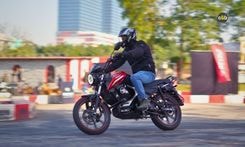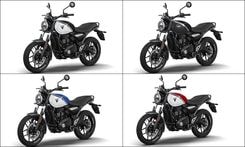MotoGP: The Origin Story

Birth Of MotoGP (Unoffical):
The first-ever race took place at the Isle of Man TT course in 1949 which was already well known at the time, organized by the Federation Internationale de Motocyclisme (FIM). The race was for bikes of 125cc, 250cc, 350cc, and 500cc bikes and 600cc sidecars.

Leslie Graham won the first-ever 500cc title on a British-built AJS machine. He was a former Lancaster bomber pilot. Freddie Frith and his fellow countrymen won the 350cc inaugural title on a Velocette.
1950-1975:
From 1950 to 1975, the Italians dominated the 500cc class of Grand Prix motorcycle racing. During these 26 years, the Italians won the title 24 times. Riders like Giacomo Agostini, John Surtees and Mike Hailwood got MV Agusta and Gilera many world championship wins.
The 60s:
The Japanese motorbike industry began to up the game during this decade and many manufacturing companies like Honda, Suzuki, and Yamaha won their first World Championship titles in the 125cc, 250cc, and 500cc category. Suzuki had great success in a new 500cc class that was introduced in the year 1962.
The late 60s:
The late 60s marked the golden era for MotoGP as it marked the dominance of motorcycling legend, Giacomo Agostini, the most successful rider in the history of the World Championship. Honda with Hailwood tried to compete for the 500cc crown off MV Agusta but Agostini won in both 1966 and 1967. He took 10 of his 15 titles in five successive seasons as a double champion in 350cc and 500cc.
As the cost of competing in the Grand Prix spiraled out of control many Japanese firms withdrew from the competition leaving only Yamaha by the end of the ‘60s. FIM in response introduced a rule that limited bikes to single-cylinder engines in 500cc class, two cylinders in 125cc and 250cc, and four cylinders in 350cc and 500cc.

Honda's Return with Four-stroke Technology:
After leaving the sport in 1967, Honda decided to return in 1979 to premier class Grand Prix racing as an attempt to do things differently but things didn't turn out to be good when they opted for four-stroke engines instead of two-stroke. It went so bad for Honda that they didn't make an appearance until the 11th race of the season when both Honda bikes retired.
The 1980s:
The 1980s marked a glamorous decade for Grand Prix motorcycle racing, and it delivered some of the best and the greatest battles ever witnessed on two wheels.
The likes of Wayne Rainey, Freddie Spencer, Eddie Lawson, and Wayne Gardner had a series of intense spectacles on Yamaha and Honda bikes, that helped boost the sport's global audience. For many motorcycle racing enthusiasts around the world, these characters represent the golden days of the sport.
The 2000s - The birth of MotoGP (official):
With Honda's dominance of the 500cc Grand Prix in the 1990s and Valentino Rossi winning his first premier class 500cc title in 2001, the sport was officially rebranded MOTOGP in the following year.

The rebrand came with many changes like four-stroke engines were introduced again and the size of premier class bikes was increased to 990cc, but it didn't stay that way for long because in 2007, the regulation was changed again and the size came down from 990cc to 800cc of which Australia's Casey Stoner took full advantage by winning the title with Italian manufacturer Ducati, thus breaking the three-decade dominance of Japanese-built machines.
Latest News
 car&bike Team | Jan 8, 20262026 World Car Awards Finalists AnnouncedThe winners of the awards will be announced on April 1 at the 2026 New York Auto Show.1 min read
car&bike Team | Jan 8, 20262026 World Car Awards Finalists AnnouncedThe winners of the awards will be announced on April 1 at the 2026 New York Auto Show.1 min read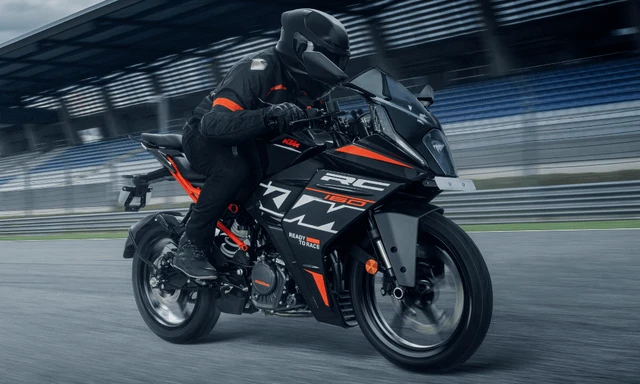 car&bike Team | Jan 8, 2026KTM RC 160 Launched In India At Rs 1.85 LakhThe RC 160 serves as the entry point in KTM India's supersport range.2 mins read
car&bike Team | Jan 8, 2026KTM RC 160 Launched In India At Rs 1.85 LakhThe RC 160 serves as the entry point in KTM India's supersport range.2 mins read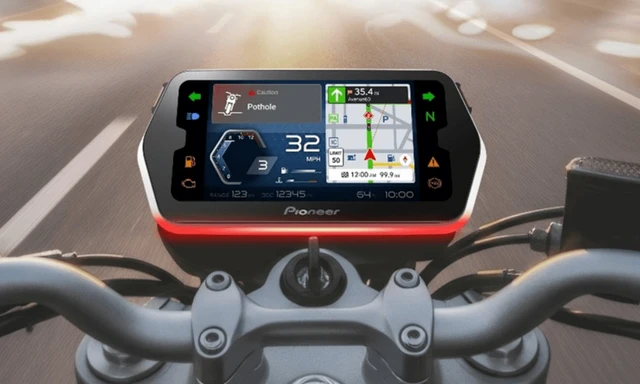 car&bike Team | Jan 8, 2026Pioneer Ride Connect To Debut As Phone-First Motorcycle Dashboard PlatformPioneer Ride Connect previews a future where motorcycle dashboards rely on smartphones, cloud navigation and voice control instead of standalone hardware.1 min read
car&bike Team | Jan 8, 2026Pioneer Ride Connect To Debut As Phone-First Motorcycle Dashboard PlatformPioneer Ride Connect previews a future where motorcycle dashboards rely on smartphones, cloud navigation and voice control instead of standalone hardware.1 min read Jaiveer Mehra | Jan 7, 2026Tata Harrier, Safari Petrol Launched In India: Prices Start From Rs 12.89 LakhBoth SUVs get the 1.5-litre Hyperion turbo-petrol engine from the Sierra in a higher state of tune.3 mins read
Jaiveer Mehra | Jan 7, 2026Tata Harrier, Safari Petrol Launched In India: Prices Start From Rs 12.89 LakhBoth SUVs get the 1.5-litre Hyperion turbo-petrol engine from the Sierra in a higher state of tune.3 mins read Carandbike Team | Jan 7, 2026Toyota Urban Cruiser EV India Debut On January 19Toyota’s entry EV is the sister model to the Maruti Suzuki e Vitara and shares the same underpinnings and tech.1 min read
Carandbike Team | Jan 7, 2026Toyota Urban Cruiser EV India Debut On January 19Toyota’s entry EV is the sister model to the Maruti Suzuki e Vitara and shares the same underpinnings and tech.1 min read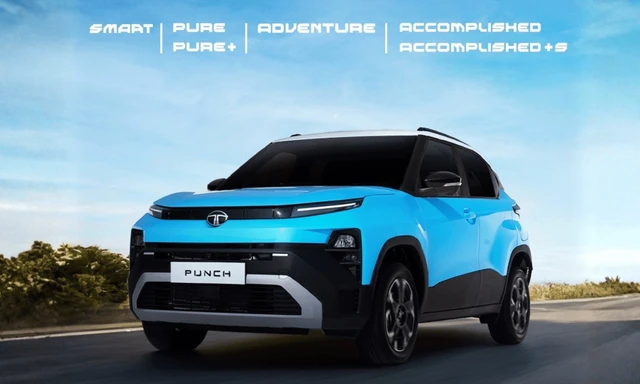 car&bike Team | Jan 7, 2026Tata Punch Facelift Variants, Key Features RevealedThe Punch facelift will be offered in four familiar key trim levels and six variants.1 min read
car&bike Team | Jan 7, 2026Tata Punch Facelift Variants, Key Features RevealedThe Punch facelift will be offered in four familiar key trim levels and six variants.1 min read
 Amaan Ahmed | Jan 3, 2026VLF Mobster 135 300 KM Review: Fun But FlawedA 125 cc scooter with Italian design and Chinese genes is a rare combination, and while some may be tempted to dismiss it because of its origins, the VLF Mobster shows 125s can also be exciting – but not without compromises.11 mins read
Amaan Ahmed | Jan 3, 2026VLF Mobster 135 300 KM Review: Fun But FlawedA 125 cc scooter with Italian design and Chinese genes is a rare combination, and while some may be tempted to dismiss it because of its origins, the VLF Mobster shows 125s can also be exciting – but not without compromises.11 mins read Preetam Bora | Dec 30, 2025TVS Orbiter Review: Real-World Performance and Range TestedThe TVS Orbiter is a promising electric scooter promising decent range, practicality and pricing. But is there any reason to avoid it? We spent a few days getting to know it better.9 mins read
Preetam Bora | Dec 30, 2025TVS Orbiter Review: Real-World Performance and Range TestedThe TVS Orbiter is a promising electric scooter promising decent range, practicality and pricing. But is there any reason to avoid it? We spent a few days getting to know it better.9 mins read Jafar Rizvi | Dec 24, 2025MG Windsor EV 38 kWh Long-Term Report: IntroductionThe Windsor EV has joined our garage, and before it settles into daily duty, I took it out to get a sense of what living with an electric car is like.4 mins read
Jafar Rizvi | Dec 24, 2025MG Windsor EV 38 kWh Long-Term Report: IntroductionThe Windsor EV has joined our garage, and before it settles into daily duty, I took it out to get a sense of what living with an electric car is like.4 mins read Seshan Vijayraghvan | Dec 23, 20252026 Kia Seltos Review: Formula Is Spot On, But Is The Timing Right?The 2nd-gen Kia Seltos has arrived, but it has the challenge of facing strong rivals like the Victoris and Sierra. The question is simple - Does it still have what it takes?9 mins read
Seshan Vijayraghvan | Dec 23, 20252026 Kia Seltos Review: Formula Is Spot On, But Is The Timing Right?The 2nd-gen Kia Seltos has arrived, but it has the challenge of facing strong rivals like the Victoris and Sierra. The question is simple - Does it still have what it takes?9 mins read car&bike Team | Dec 26, 2025Tata Punch EV Long-Term Second Report: Highway Performance, Pros & ConsAfter a week of living with the Tata Punch EV Long Range—including a proper Mumbai-Nashik highway test—we've learned what this little electric SUV is really made of.1 min read
car&bike Team | Dec 26, 2025Tata Punch EV Long-Term Second Report: Highway Performance, Pros & ConsAfter a week of living with the Tata Punch EV Long Range—including a proper Mumbai-Nashik highway test—we've learned what this little electric SUV is really made of.1 min read
